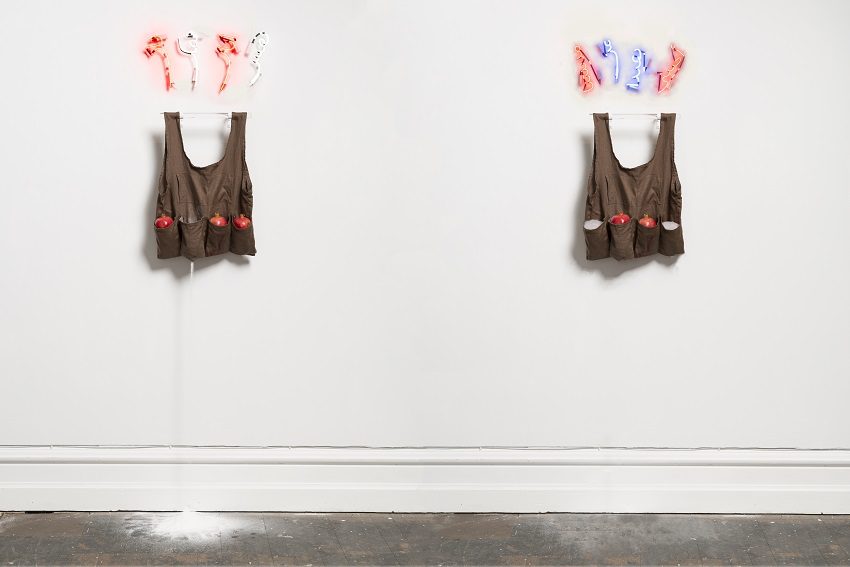The nightmares and daydreams of Elyas Alavi

With Daydreamer Wolf, Elyas Alavi explores the aftermath of a horrific event he witnessed when visiting family in Afghanistan.
On a July day in 2016 bombs activated by suicide terrorists ripped through a Hazara-led protest march in Kabul. About 100 people were killed and many others injured. It wasn’t the first of such atrocities and, sadly, not the last. The event rated international media interest before sliding off the screen and into the archives. The aftermath is never covered. However, in Elyas Alavi’s Daydreamer Wolf exhibition, the event comes back onto the screen.
The artist was visiting family in Afghanistan at the time and was there at the march. He ran, along with everyone else, when the bombs went off. He thought that in local context it was a small-scale event. Only later did the extent of the carnage emerge. Alavi felt the need to make a work about he bombing.
“I feel like those kinds of events are so big, but at the same time they just fade away,” Alavi says. “People forget because the people who were there don’t have a voice really.”

He filmed the aftermath with his camera. The process of looking for a friend, Rajab, drives the narrative as a taskera (Afghan Identity Card) recovered at the site, is examined with the victim’s name visible through the blood stains. The task of looking involves driving from one hospital to another, checking lists of the injured. It’s a doleful process. Hopes fade. Alavi trails back to Rajab’s home town and interviews his parents and widowed wife. The camera is there at the graveside as Rajab is consigned to the bare, rocky ground.
To be Hazara, particularly living in Afghanistan, is to know persecution, violence, discrimination and to live with an ever-present threat of death. Alavi fled from Afghanistan’s Daikundi province to Iran with his family when he was a small boy. In 2007, he came to South Australia as a refugee at risk and became an Australian citizen in 2011. Encouraged, particularly by South Australian-based international artist Hossein Valamanesh, Alavi undertook a Bachelor of Visual Art studies followed by a Masters (Visual Arts). Several one-person exhibitions later and Alavi’s emerging artist credentials have been recognised with a Samstag Scholarship (2018), which will see him undertake further study, in Europe.

On the face of it, Alavi’s journey is a classic, feel-good story – hard work and opportunity rewarded. But as this exhibition demonstrates, in art there is never a blank canvas. The lines and patterns are already there, invisible until the first creative act occurs. With Alavi, these lines and patterns are his indelible sense of cultural identity. To grow up in a small village, high in remote mountains, wrapped in social and cultural traditions stretching back centuries, is inconceivable to many suburban-raised Australians. His love of and practice of writing poetry stems from this experience. So, although embracing a new life in Australia, his sense of belonging to his Hazara homeland remains unshaken. Reinforcing this is a sense of obligation, to speak for others unable to tell their own stories to each other or the wider world.
The video We die so that provides the spine from which other works hang. A wall piece Hang associates painted images of animal carcasses on butchers’ hooks, with unfolded sheets of newspapers, implying that reporting terrorist atrocities treats people exactly the same way. Salt and Pomegranate, a wall piece featuring two notional suicide vests stuffed with salt and pomegranates, offers poetic irony – implying a parallel between seeds and shrapnel. Writer Andy Butler has identified Alavi’s particular interest in the linguistic connection between the word ‘pomegranate and ‘grenade’. Also, the fact that Afghanistan’s second largest city Kandahar (a Taliban stronghold and safe-haven for suicide bombers) is known for its pomegranates. A further irony – the pomegranate was a symbol of life in Ancient Greece.

It is appropriate at this point to draw attention to Alavi’s parallel practice as a poet. Several are published in the exhibition’s accompanying publication. Asking works of art to act as visual poetry is often contrived but in Alavi’s instance the analogy holds. There are numerous silences or intervals in his installations that equate to interwoven cadences of poetic reading. This cross fertilisation may also explain the effective use of understatement, unexpected juxtapositions and unwritten implications which draw the viewer in as if listening to a story that dares to be told. This strategy is particularly evident in another wall work, 113, which consists of portrait paintings on units of glass, arranged as if a memorial wall. And memorial it indeed constitutes as a number of the people depicted have died at the hands of terrorists. Half-drawn or with details such as head or eyes missing, they imply, along with the fragility (and danger) of the glass surface, the tenuous nature of individual life. Floating each panel out from the wall allows each depiction to cast a shadow, and thus imply an inner or parallel identity.
As an artist, Alavi has a distinctive voice and touch. Equally importantly he has a compelling story to tell. Engaging with community is very important to the artist – head to the ACE Open website for details on a number of community projects programmed as part of the exhibition.
Elyas Alavi
Daydreamer Wolf
ACE Open
Until Saturday, July 20
aceopen.art
Header image:
Salt and Pomegranate, 2018, Elyas Alavi (Photo: Christo Crocker)